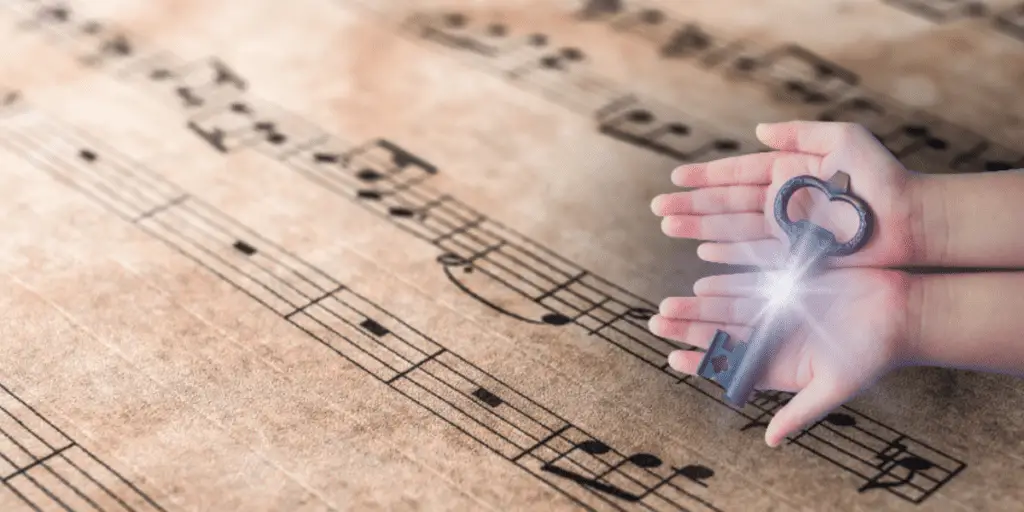
Musical modes have been a fundamental aspect of music throughout history. From ancient Greece to modern pop and jazz, modes have always been used to create a wide range of musical styles and textures. This guide will offer an in-depth understanding of what a musical mode is, its practical application, and an overview of the various modes and their usage in modern music.
Whether you’re a musician looking to incorporate modes into your compositions or a music enthusiast wanting to deepen your understanding, this guide will provide the knowledge you need to take your music to the next level.
What is a musical mode?
Think of a mode like a recipe for a delicious dish. Just like a recipe has a certain sequence of actions, a mode has a specific sequence of notes. And, just like how different recipes have unique flavors, different modes generate different colors that evoke all kinds of emotions.
In today’s modern musical approach, the mode is essentially a subset of a scale. If we take any note from a scale and play it all the way up to the next octave, we’re essentially creating a mode. And, just like how there are many variations of the same recipe, there are various different modes that can be derived from a scale. So, next time you’re playing your guitar, try experimenting with different modes and see how they can add new dimensions to your music.
Modes vs. Scales: Understanding the Differences

As a guitarist, it’s essential to understand the differences between modes and scales. Modes are simply an older musical approach (dating back to the renaissance era), while the major-minor approach used today is a more recent development. Both methods are still used in modern music and can even be found in the same song.
The sound differences between the major-minor approach and the modal approach are quite interesting. The modal approach can generate a more “definitive” tone that sometimes sounds “older” or with some cultural affiliation. On the other hand, the major-minor system is more familiar to our modern ears due to its flexibility and is frequently used in contemporary music.
By understanding these definitions, you will effortlessly navigate through analyzing and understanding music. Incorporating these concepts into your music-making will not only sharpen your ears but also enhance your musical abilities and open up new horizons.
Unlocking the Secrets of Musical Modes

Have you ever wondered how many modes there are in music? The answer is, it depends! But don’t worry. We’re here to break it down for you. The most “basic” modes to start with are the seven modes of the major scale. These are the building blocks for understanding the concept of modes in music.
As mentioned before, a mode is a subset of a scale, so because the major scale has seven notes, it also has seven modes. There are many other modes in music. For example, the melodic or harmonic minor scales can also be broken down into modes, each creating a distinctive sound signature of its own.
The seven modes of the C Major scale:
| Mode | Starting Note | Interval Pattern | Defining Note |
| Ionian | C | 1-1-½-1-1-1-½ | Neutral |
| Dorian | D | 1-½-1-1-1-½-1 | Major 6th |
| Phrygian | E | ½-1-1-1-½-1-1 | Flat 2nd |
| Lydian | F | 1-1-1-½-1-1-½ | Sharp 11 |
| Mixolydian | G | 1-1-½-1-1-½-1 | Flat 7th |
| Aeolian | A | 1-½-1-1-½-1-1 | Minor 6th |
| Locrian | B | ½-1-1-½-1-1-1 | Flat 5th |
Types of Musical Modes
When trying to describe the different colors of modes, it can be difficult to find the right words. Commonly used terms like “happy” can apply to multiple modes, such as Ionian, Mixolydian, and Lydian, which can be quite confusing. But don’t worry! There’s a simpler and much more effective way to describe the unique sounds of modes.
One way to describe modes is by measuring their darkness and brightness. We can do this by looking at the number of sharp or flat notes in each mode when compared to the Ionian mode (also known as the major scale).
For example, the Ionian mode doesn’t have any sharp or flat notes, making it neutral in terms of darkness and brightness. The Lydian mode, on the other hand, has a sharpened 4th degree, making it brighter than the Ionian. Similarly, the Mixolydian mode has a flattened 7th note, making it a little darker than Ionian.
A video on the subject by David Bennett Piano that is worth watching:
Exploring the 7 Modes of the Major Scale
Each mode possesses a distinct sound that is determined by a specific sequence of notes. In this section, we will delve into each mode and compare its characteristics, usage, and note patterns.
1. Ionian (major scale)

2. Dorian

3. Phrygian

4. Lydian

5. Mixolydian

6. Aeolian (minor scale)

7. Locrian

Techniques for Improvisation and Composition

Understanding modes will enhance both your improvisational abilities and your ability to create compelling musical compositions. Modes allow for a more nuanced and expressive approach and can add a unique and distinctive character to your music.
When improvising, using modes can help to highlight the current harmonic progression in a more focused way. For example, in the chord progression Dm7-G7-Cmaj7, all of the chords are derived from the C major scale, so you could simply improvise over it using the C major scale. However, by using the modal approach and playing D Dorian on Dm7, G Mixolydian on G7, and C Ionian on Cmaj7, the sound of each chord in the progression becomes more distinct and evocative.
When incorporating modes into your composition, you can add depth and complexity to your music by exploring unique cadences and textures that differ from the traditional major-minor approach. This older method of composition can lend an exotic or otherworldly feel to your music, making it well-suited for use in film scoring and other mediums.
Composing with Modes: A Fun and Creative Experience
When it comes to writing music using modes, a great way to capture the unique modal sound is through melody. One approach is to start with a melody and focus on highlighting the defining notes of each mode.
To illustrate this, let’s take a look at composing a melody using the C Phrygian mode. The defining note of this mode is the flattened 2nd degree, which is Db in this case. Pay attention to how the melody emphasizes the Db note while maintaining the “home base” on the C note.

When using the Dorian mode (the 2nd mode) in your compositions, you’ll notice a unique blend of melancholy and uplifting tones. The characteristic note of this mode is the major 6th, which in the key of C is A. By emphasizing this note in your melody, you’ll add a distinct “uplifting” quality to your composition. Experiment with different chord progressions and note choices to fully capture the essence of the Dorian mode.

For our last example, let’s try something interesting! Here is the exact same melody but written in the C Aeolian mode (the 6th mode). The characteristic note, A, is now lowered into Ab, affecting both the melody and harmony.

How to Spot Modes in Music

To become proficient at identifying musical modes, it’s important to familiarize yourself with each mode’s unique characteristics and harmonic structure. Here’s a step-by-step guide to help you out:
- First, listen for the “home base” or most comfortable feeling in the music. This is usually the root chord or the spot where you feel the music resolving.
- Next, pay attention to the relationship between the root chord and other chords in the piece. Each mode has its own characteristic notes that should be present in order to create the modal sound.
For example, if you hear a progression from G minor chord (root) to Ab major chord, it could indicate that the piece is in Phrygian mode as this mode’s characteristic degree is the flat 2nd. On the other hand, a progression from G minor chord (root) to C major chord could indicate that the piece is in Dorian mode as this mode’s characteristic note is the major 6th (E in this case), which changes the 4th degree from minor to major (C minor → C major chord).
Examples of Modes in Popular Music
“Let it be by” The Beatles (Ionian)
“Oye Como Va” by Santana (Dorian)
“Wherever I May Roam” by Metallica (Phrygian)
“Here Comes My Girl” by Tom Petty and the Heartbreakers (Lydian)
“I Can’t Get No Satisfaction” by The Rolling Stones (Mixolydian)
“A Woman’s Worth” by Alicia Keys (Aeolian)
“Army Of Me” by Björk (Locrian)
In conclusion, understanding and using modes in music can greatly enhance your compositions and improvisations. Each mode has its own unique sound and characteristics, and by understanding how to use them, you can add depth and nuance to your music. Whether you’re a singer-songwriter or a professional composer, incorporating modes into your music can take your art to the next level. So, experiment with different modes, and discover new ways to express yourself through music!

